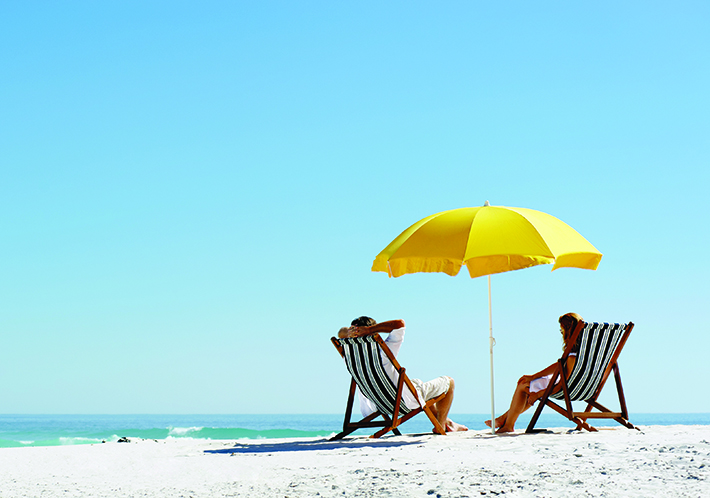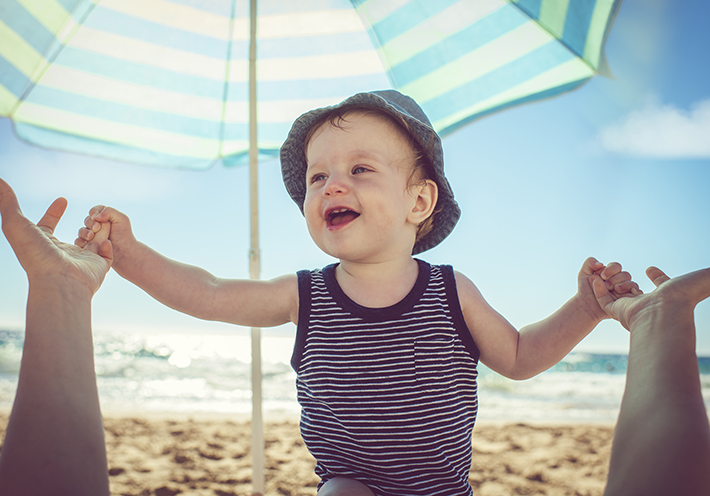
Standards Aim for Safer Umbrellas, Safer Beaches
If you follow the money, beach tourism is one of the fastest growing markets in the world, with global revenue expected to exceed more than US$250 billion in the next 10 years according to Future Market Insights, Inc. In the United States alone, it is estimated that 180 million people make nearly 2 billion visits to beaches yearly, according to The Center for Conservation Biology. That is a lot of people – spending time on a lot of the Earth’s beaches.
It is not surprising then, that the market for beach umbrellas, that ubiquitous summertime accessory, is simultaneously seeing extraordinary growth as well. With beachgoers seeking shelter from the sun and wind while they enjoy the summer, one estimate from Data Bridge Market Research predicts the beach umbrella market will reach US$9 billion by 2030, and with tourism and population numbers increasing yearly, the market likely will not stop there.
As with most activities in daily life, an increase in numbers often correlates to a concurrent increase in accidents – and the need for safety. And the beach umbrella market is no exception, with the U.S. Consumer Product Safety Commission (CPSC) reporting that beach umbrella-related incidents send approximately 300 people to the hospital each year. Enter ASTM International’s committee on consumer products (F15) and its market umbrellas subcommittee (F15.79), who are working to make beaches safer.
The Dangers
According to Bill Schermerhorn, F15.79 subcommittee chair and president of BeachBub USA, many are unaware of the dangers they potentially face on their trip to the beach. “People don’t understand the danger of windblown airborne beach umbrellas,” he says. “As the wind vibrates the pole, it starts to tip over and then you have the wind dragging it out of the hole. And now you’ve got a projectile going down the beach with a canopy and a javelin attached to it.”
FOR YOU: Standards Address PFAS in Everyday Products
Schermerhorn says he witnessed the dangers firsthand, and it inspired him to take action, not only within ASTM in developing new standards, but also as an entrepreneur, in creating new products to reduce risk.
“I became an advocate promoting beach umbrella safety as a result of seeing a horrendous accident back in 2009 when my wife and I witnessed a beach umbrella with a metal screw anchor flying down the beach,” he says. “It hit a 7-year-old girl in the face, and I just could not believe what I’d seen. So I immediately started thinking about ways to prevent that from happening.”
The result, here in 2024, is the standard consumer safety specification for beach umbrellas and anchor devices (F3681), which lays out test methods and labeling to help make beach umbrellas safer. But it also led to a fateful partnership with another advocate for beach umbrella safety, someone who knows the dangers firsthand from an accident in 2015.
Becoming an Advocate
Ed Quigley’s life changed forever when he went to the beach for a day of sun and waves on July 7, 2015. “I was sitting on a low beach chair at Bethany Beach in Delaware,” says Quigley, now retired but an active member of F15 and the market umbrellas subcommittee. “My brother-in-law yelled, ‘An umbrella is coming out of the sand.’ I turned my head to the left, and I saw it lift up and point the pole straight at me. And within seconds it shot through my left eye, breaching the brain cavity. I don’t know how, but adrenaline flows and I managed to grab it with my left hand and throw it away from me as I rolled.”

It is hoped that stakeholders will voluntarily comply with the new standard, leading to safer beaches.
Quigley was declared dead on the operating table, but after a lengthy recovery that involved losing the use of his left eye, he set about finding solutions – and helping to make sure others would not have to go through what he and his family went through. That journey took him to Capitol Hill and eventually to ASTM.
“Tim Kaine and Mark Warner wrote a letter, along with Cory Booker, to the CPSC asking them to do something to make beach umbrellas safer,” he says. “And that letter is what started the ball rolling towards this safety standard.”
The standard itself has now been published, and it is hoped it will help make beachgoers safer through voluntary adoption, according to Quigley. “So we worked on the standard for almost three years to get it to where we felt that it was providing some safety and was executable by manufacturers and retailers or distributors who want to test their products.”
The Standard
As mentioned earlier, F3681 is a comprehensive standard, including both test methods and labeling for beach umbrellas. The test methods, developed by Consumer Product Safety Commission (CPSC) engineers, are particularly intriguing and set a high bar for safety. Quigley summarizes the standard, while Schermerhorn gets into greater detail.
“There are two tests in the standard, and if the umbrella and anchor system pass the test, either one of the tests, then they are in compliance with the safety standard,” says Quigley. “And there are specified labels that they can use to indicate that compliance. So there is a warning label, just like you’d get on a lawn mower.”
READ MORE: Keeping Consumer Products Safe
According to Schermerhorn, the first test applies to umbrellas smaller than 7.5 feet in diameter and applies to approximately 95% of umbrellas on the market. The test requires that an umbrella withstand 75 pounds of force (similar to a very strong wind gust that would be encountered on a beach). This is in the form of a pull test rather than a wind-tunnel test, which was important from a complexity standpoint for manufacturers.
The product must demonstrate whether an anchoring device or base is compliant as well. “For manufacturers, the test is for not only the umbrellas but the base or the anchor to support an umbrella,” he says. “If they pass the test, then they can put a compliant sticker on the actual product.”
With regard to the second test, this applies to a smaller number of umbrellas on the market and does require a wind-tunnel test.
“So there’s a second test in the event that your umbrella is larger than 7.5 feet,” he says. “And for umbrellas of that size, they must do a wind tunnel test. That wind tunnel test has a whole different set of parameters: you must go and find a wind tunnel that’s willing to set the stage as it’s spelled out in the standard and pass the test. It’s very detailed and it’s there specifically to instruct the manufacturers of the umbrellas or of the bases what they have to do in order to be compliant for that size umbrella.”
Next Steps
Moving forward, as with most voluntary standards, it is hoped that the existence of the standard will encourage manufacturers to adopt and use it, making safety a higher priority. Once the standard is out in the marketplace and there is awareness, says Schermerhorn, “Everybody now should have a sense of responsibility and accountability, ranging from the beachgoer, to the municipality, to the resort, to the beach umbrella rental company, to the distributor, and to the retailer and manufacturer. So it’s across the board now.”
Using the standard as a guide, it will be possible in theory to restrict the use of non-compliant beach umbrellas and anchor devices from beaches.
Quigley agrees that consumer awareness of the dangers and market adoption of the new standard will be the most important factors in reducing future accidents. “Before my accident, I didn’t think beach umbrellas were dangerous. I’d see one blowing down the beach and I’d grab it, fold it up, and hand it back to the person and say, ‘Have a great day.’ But these accidents are preventable.”■
 SN Home
SN Home Archive
Archive Advertisers
Advertisers Masthead
Masthead RateCard
RateCard Subscribe
Subscribe Email Editor
Email Editor